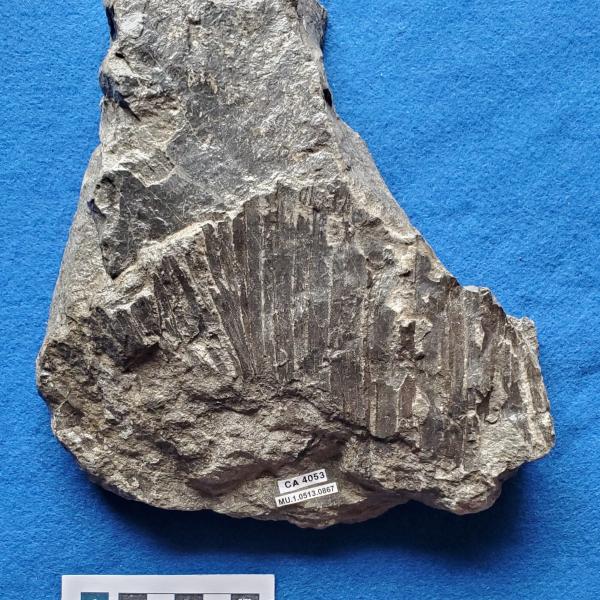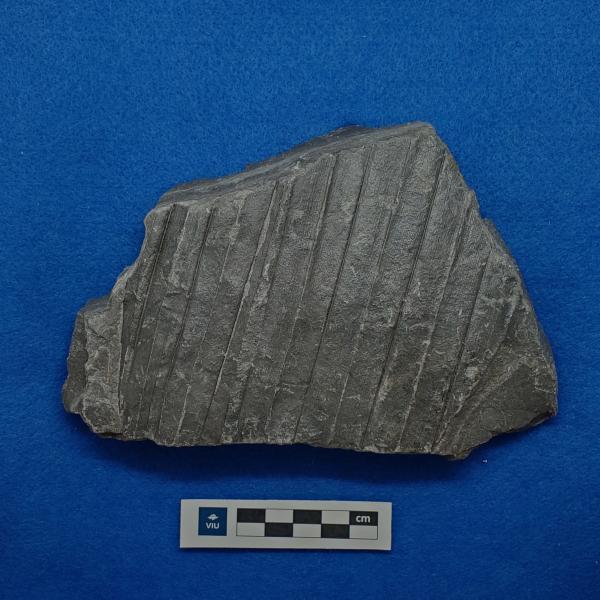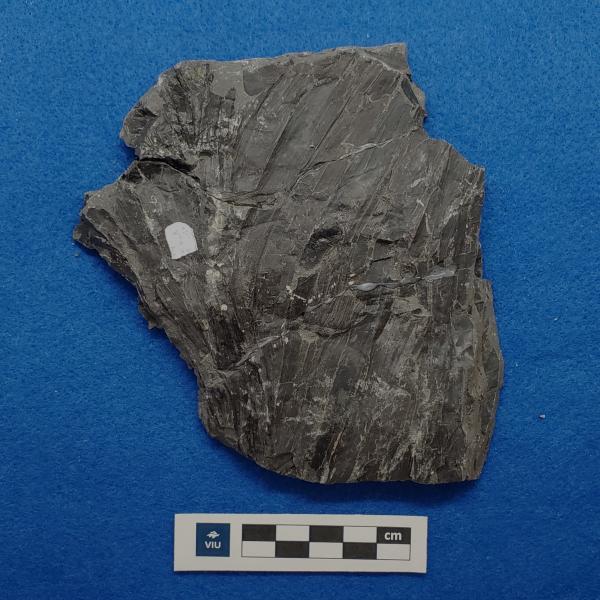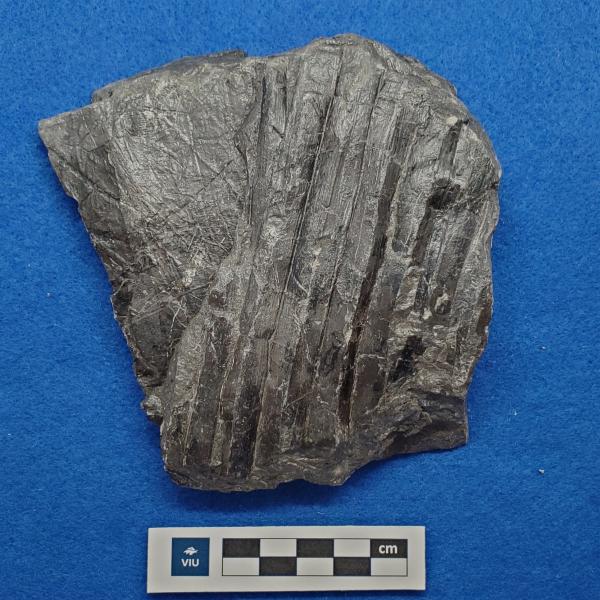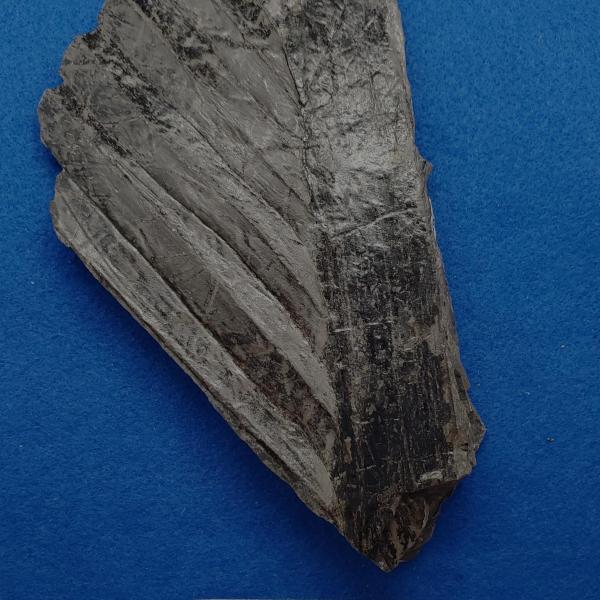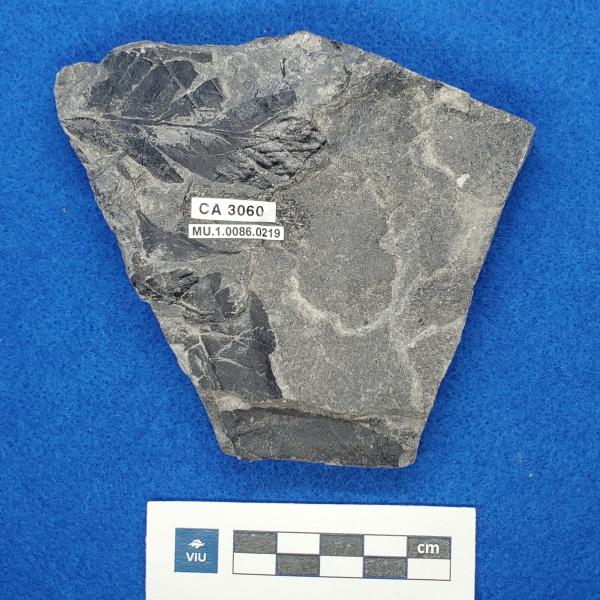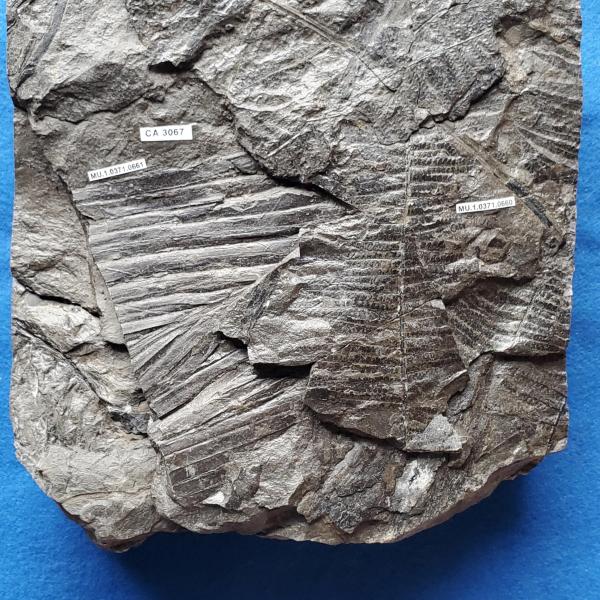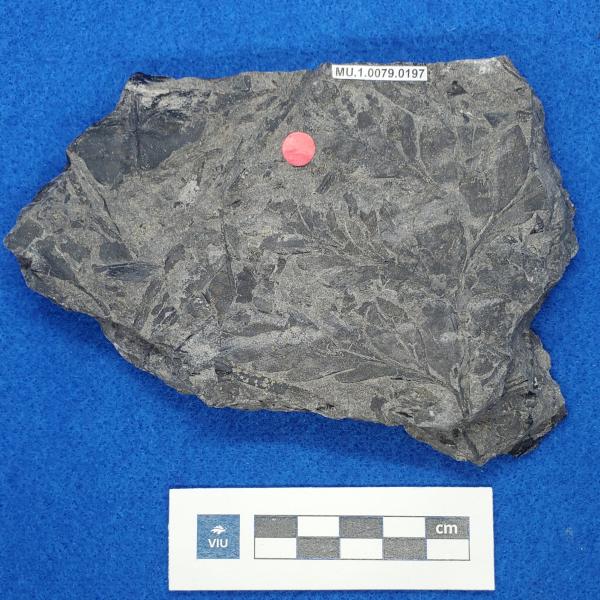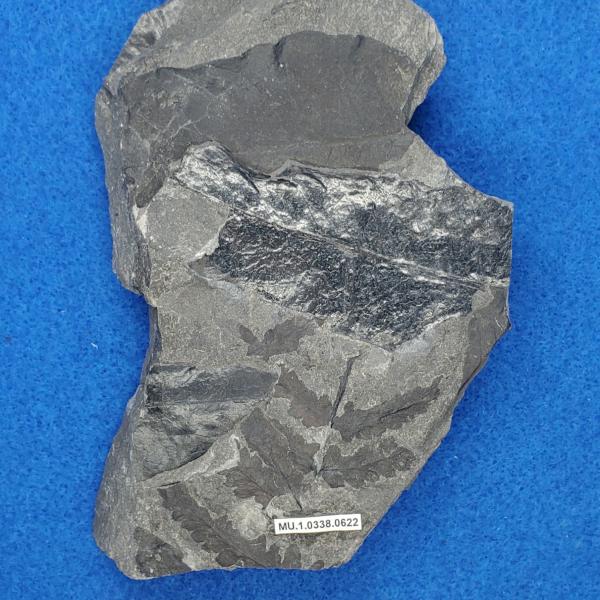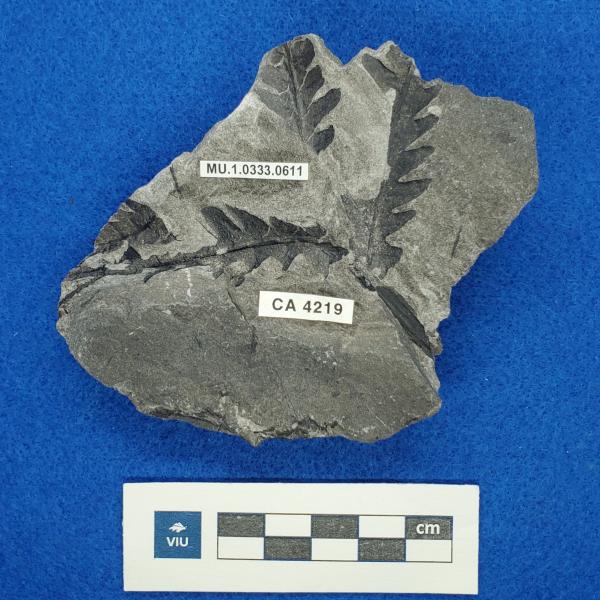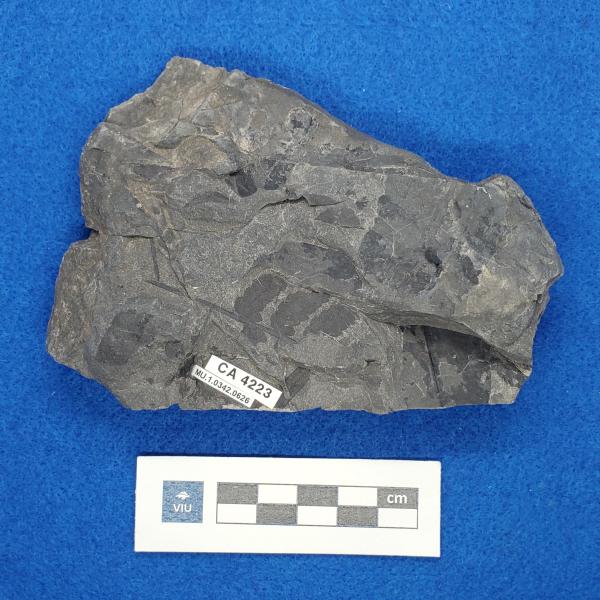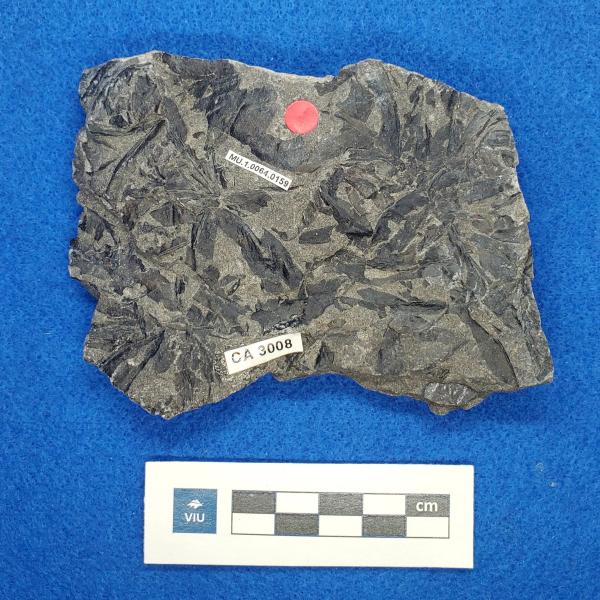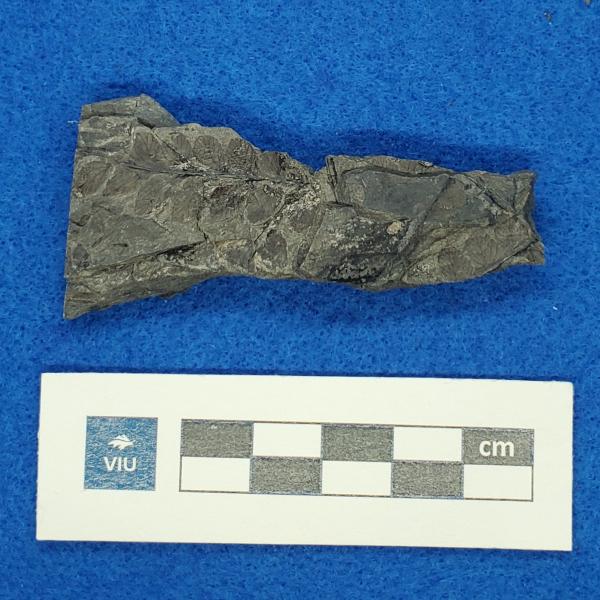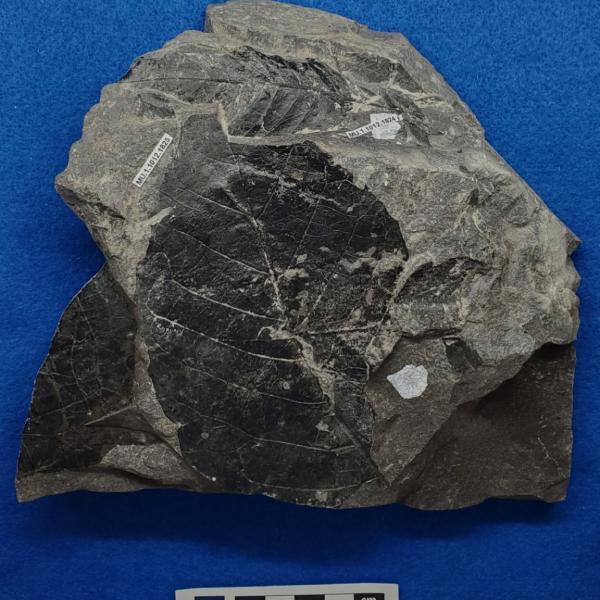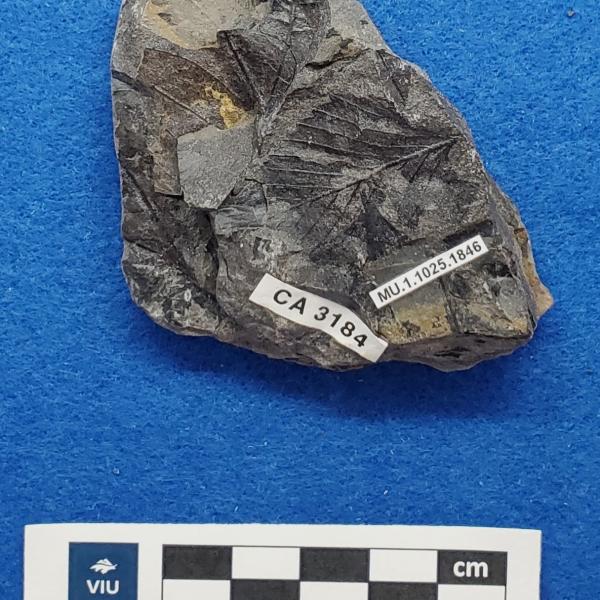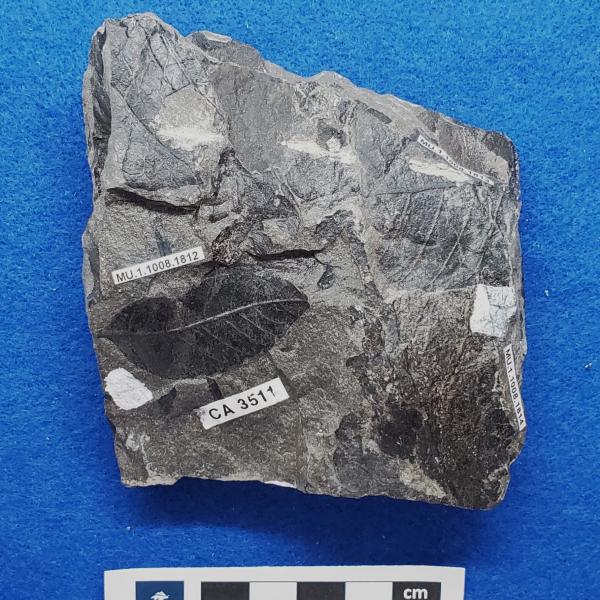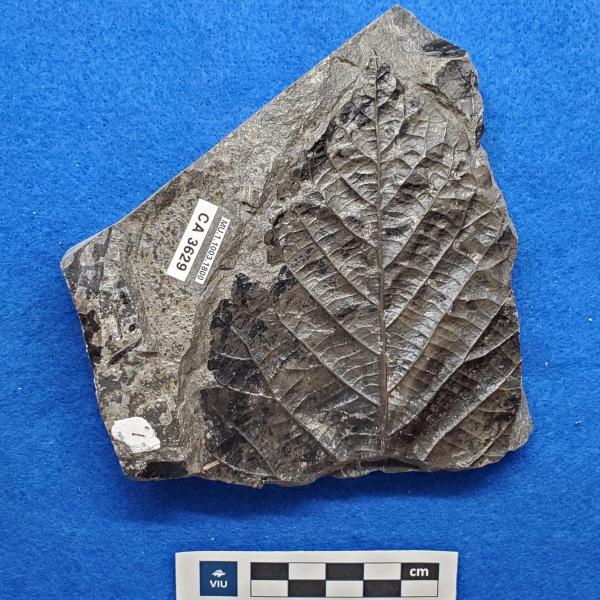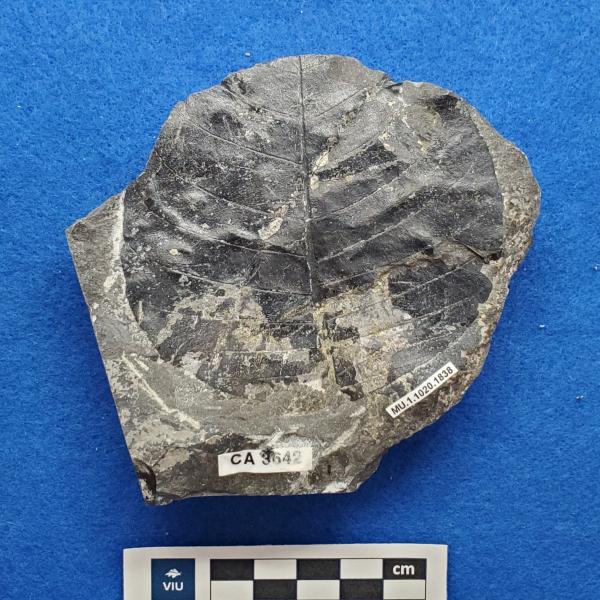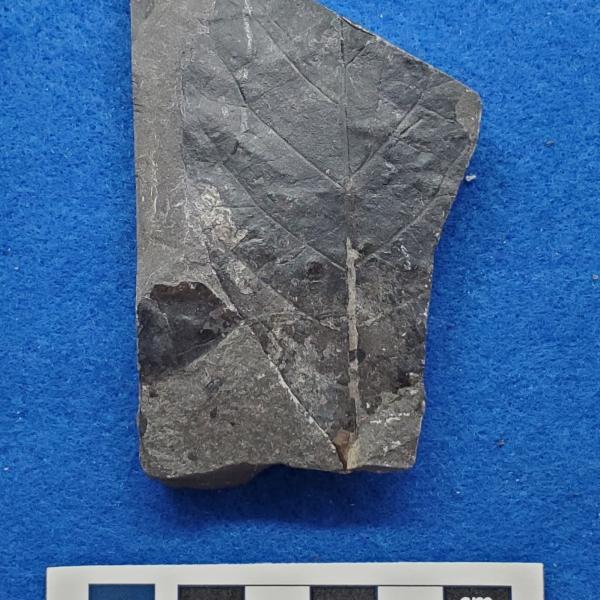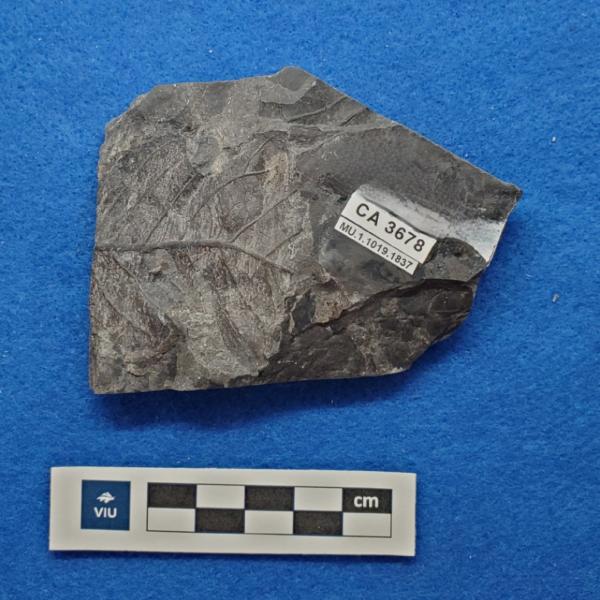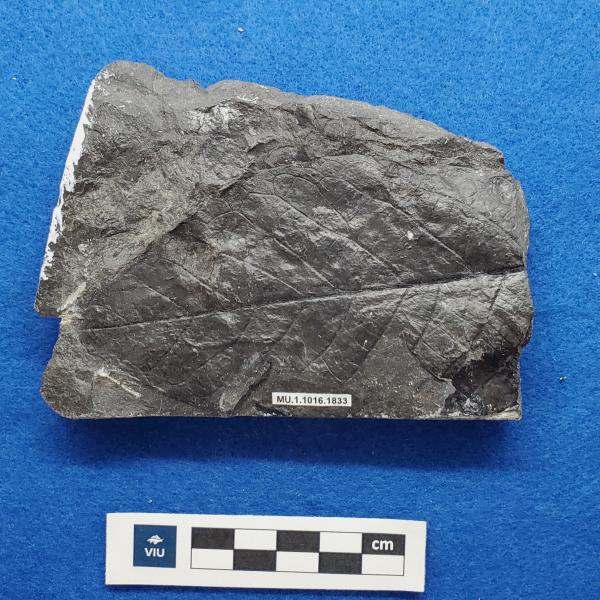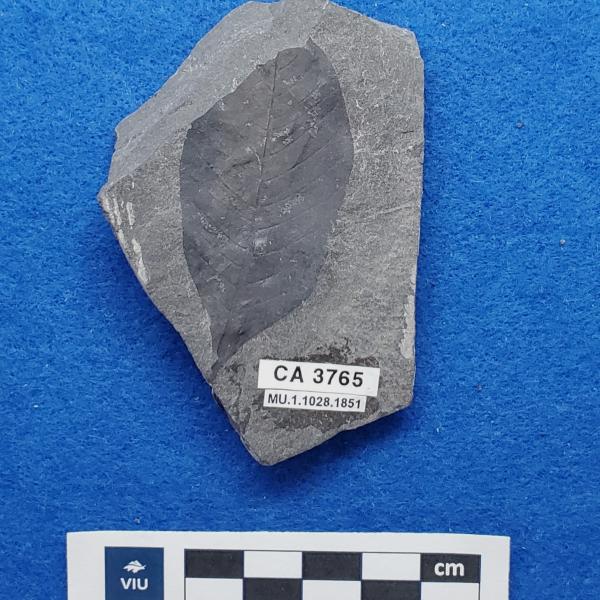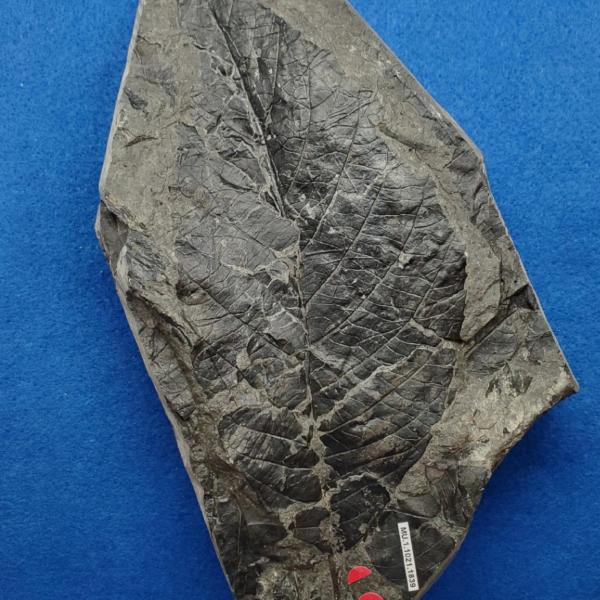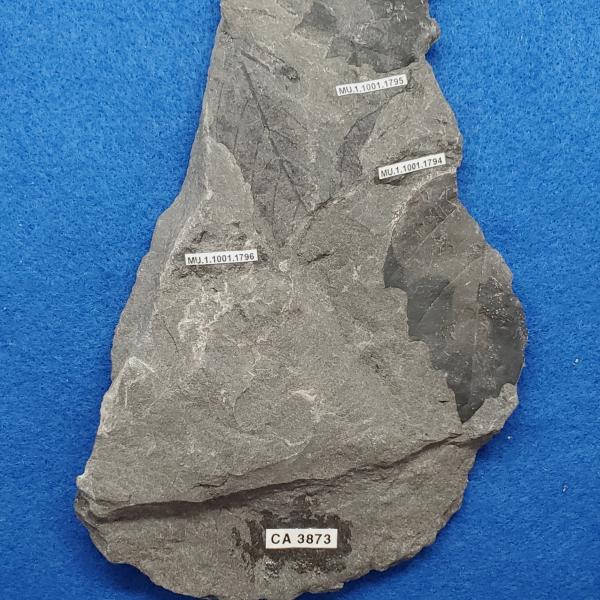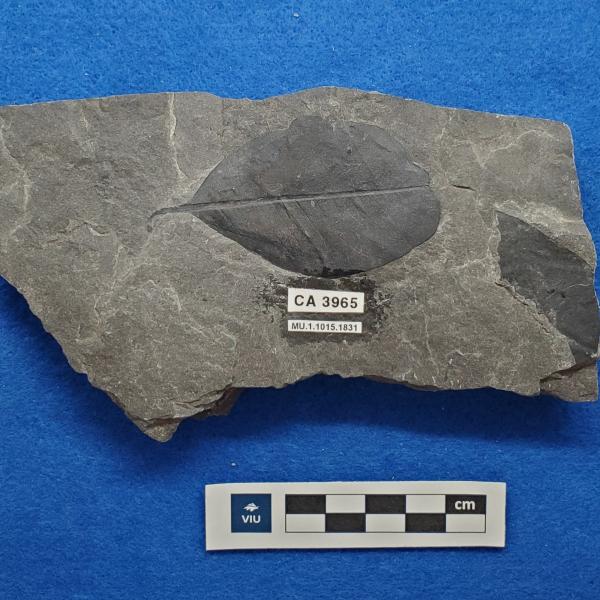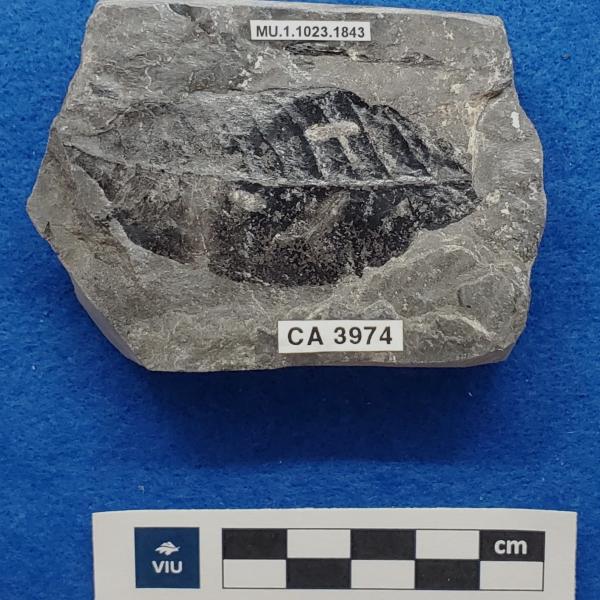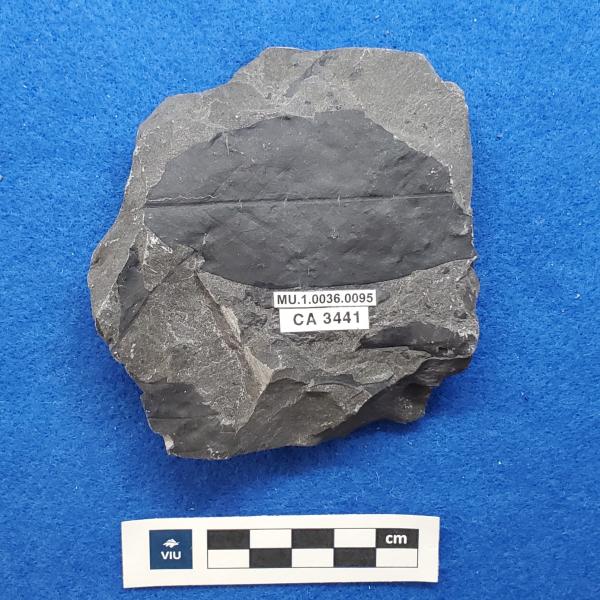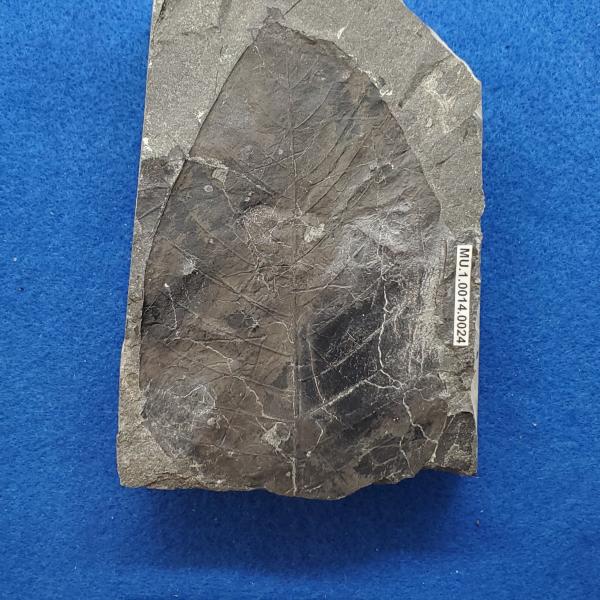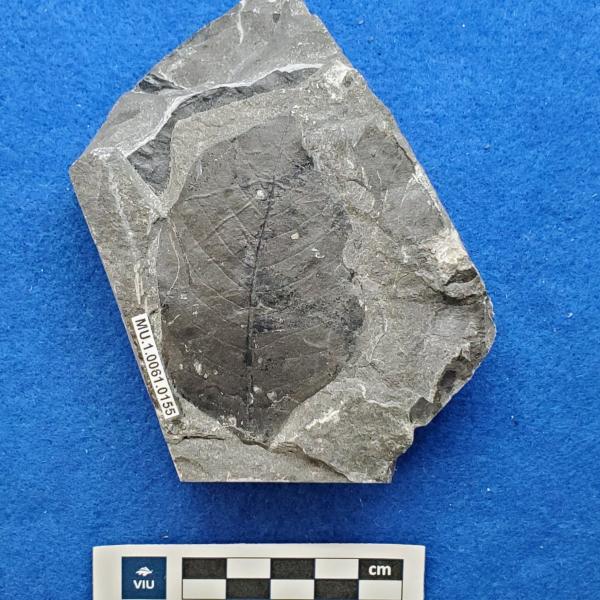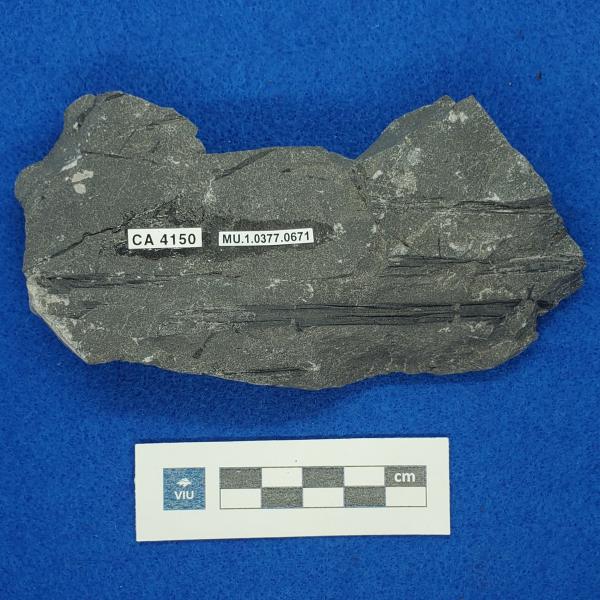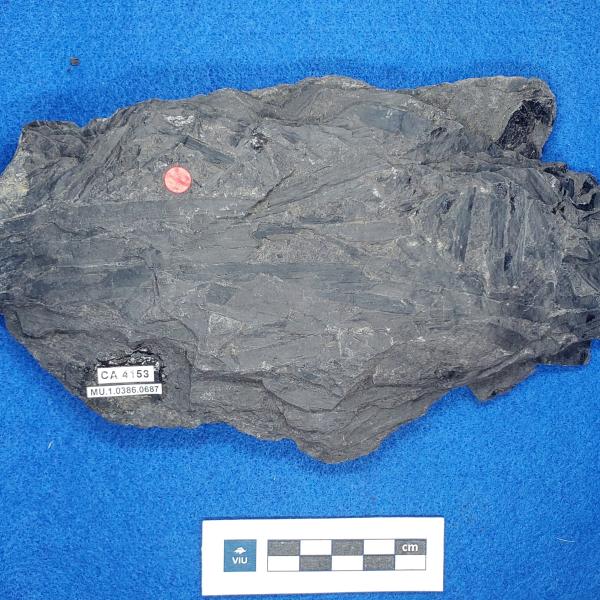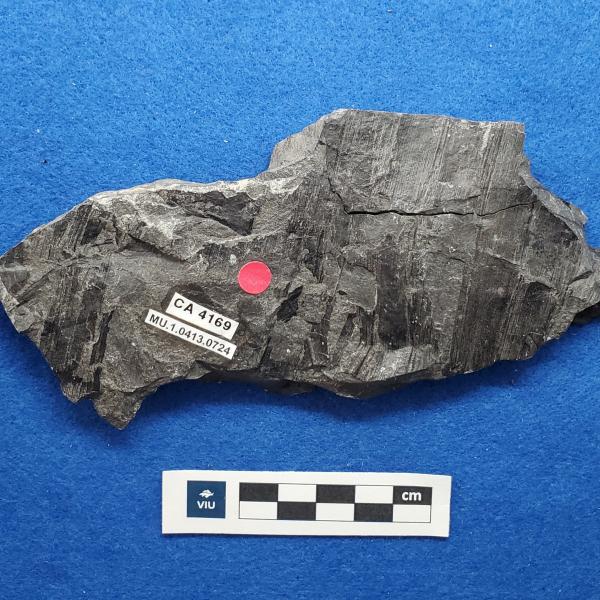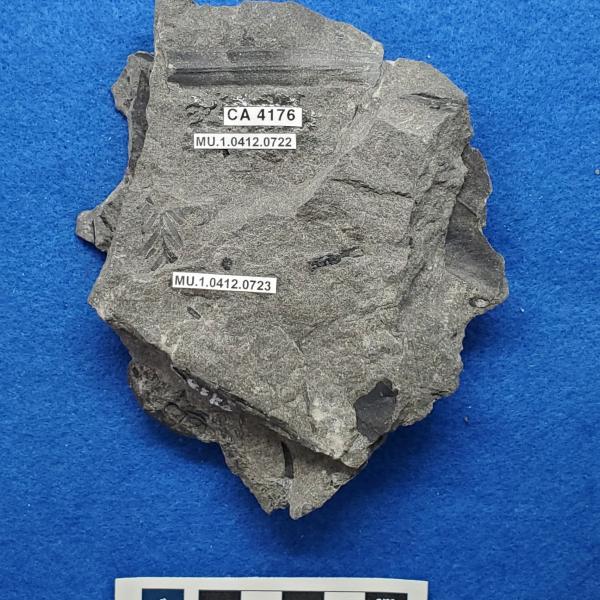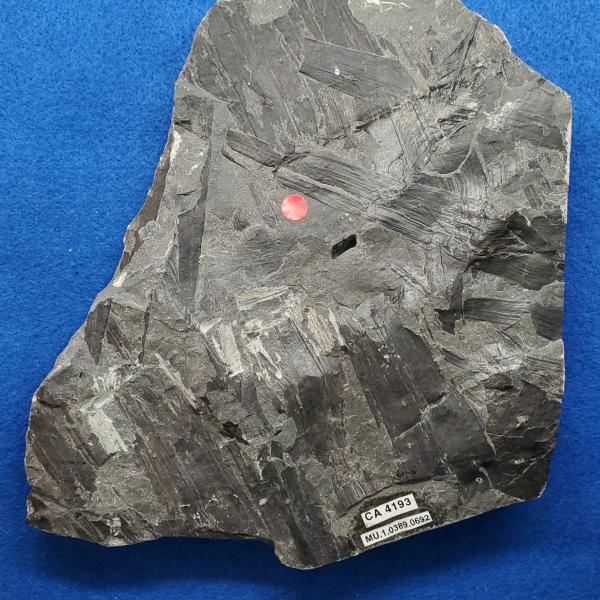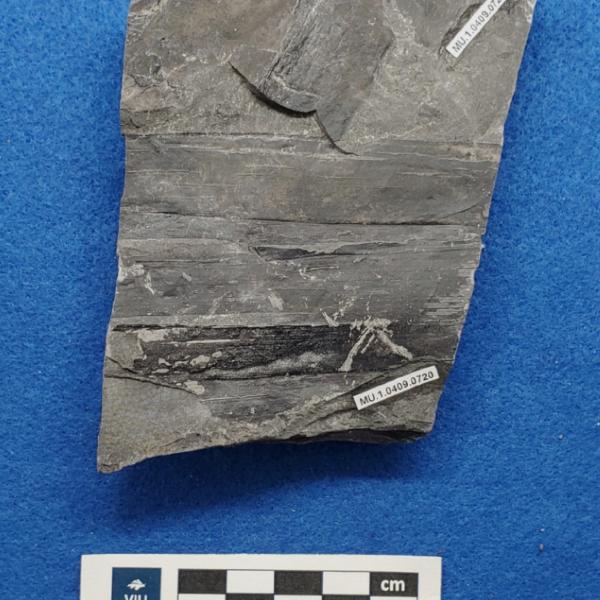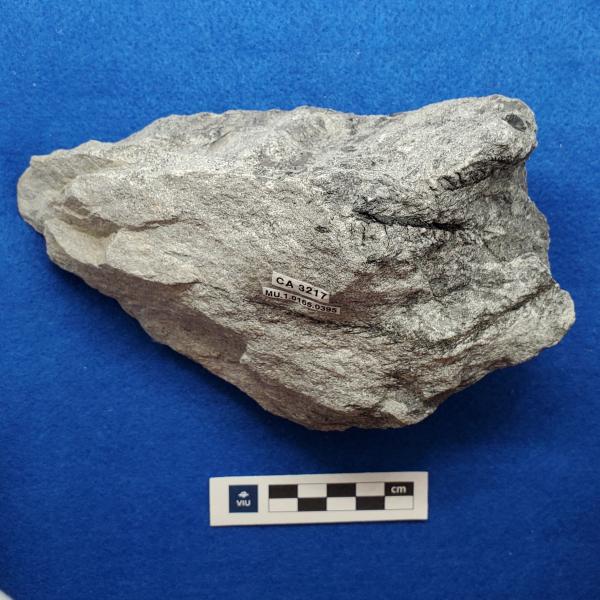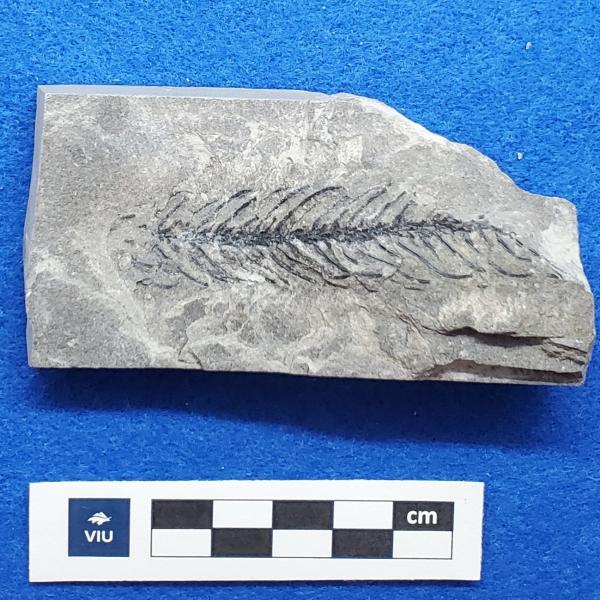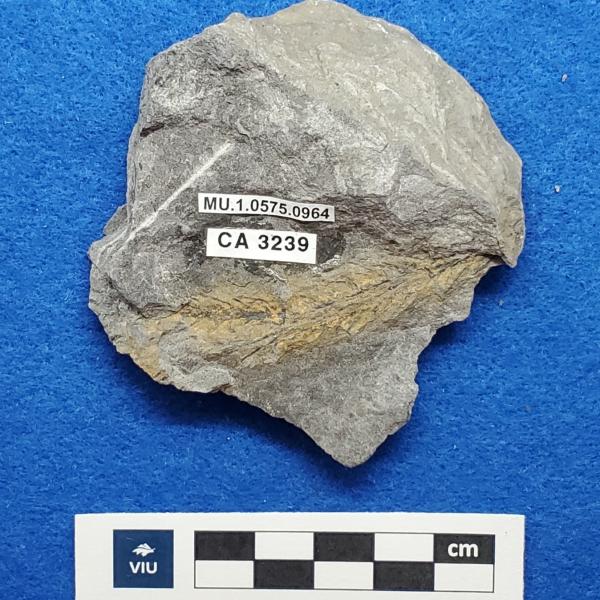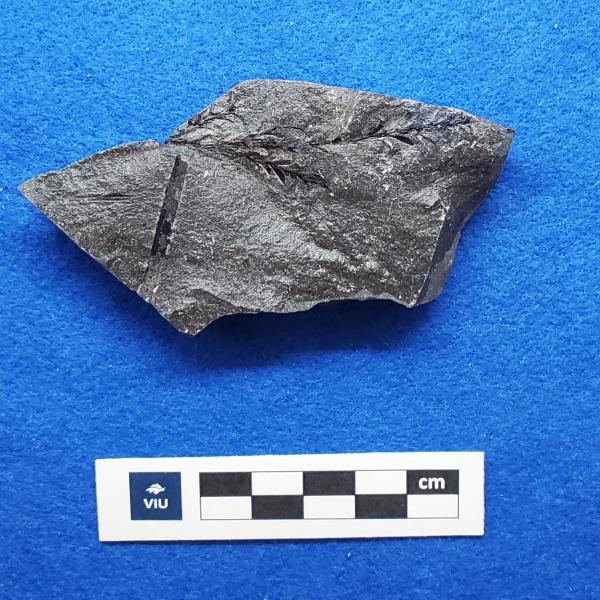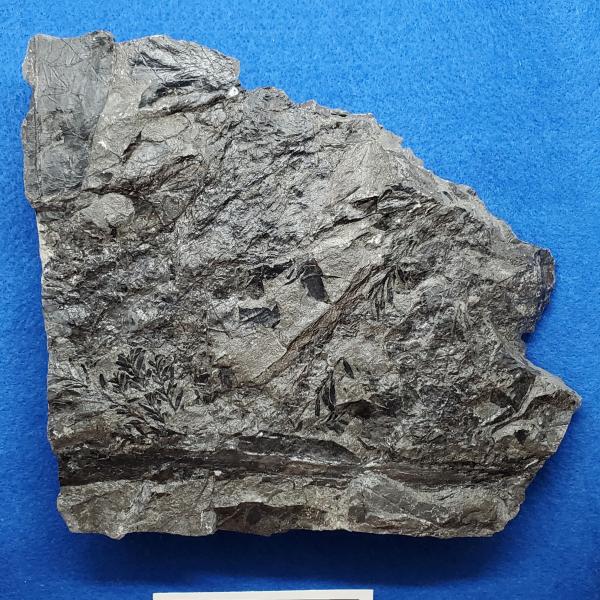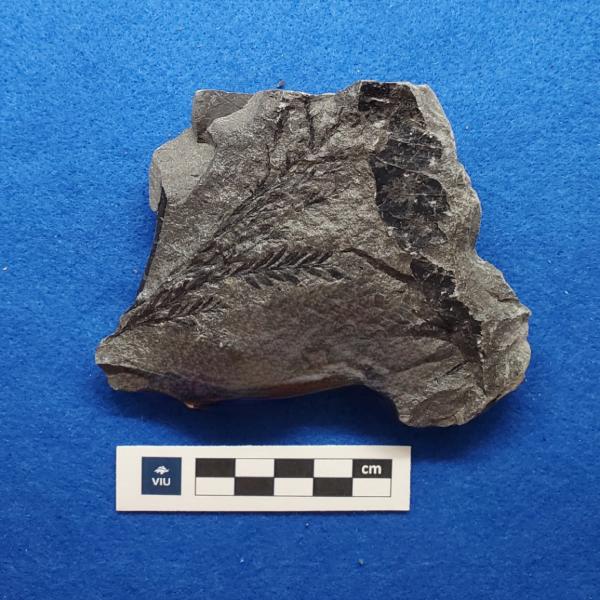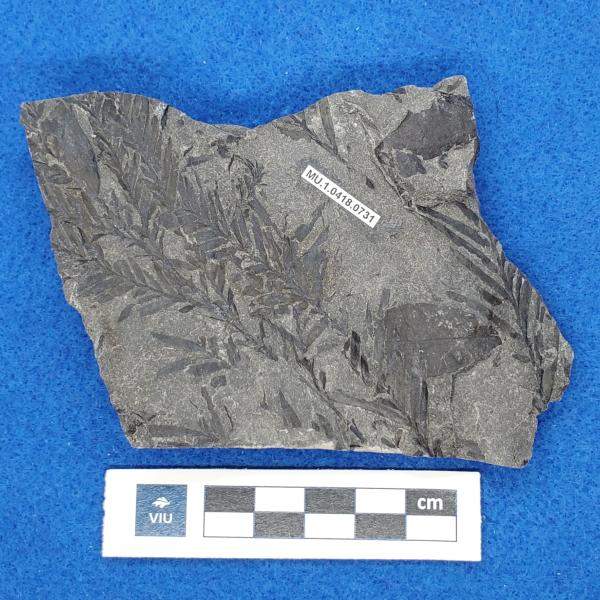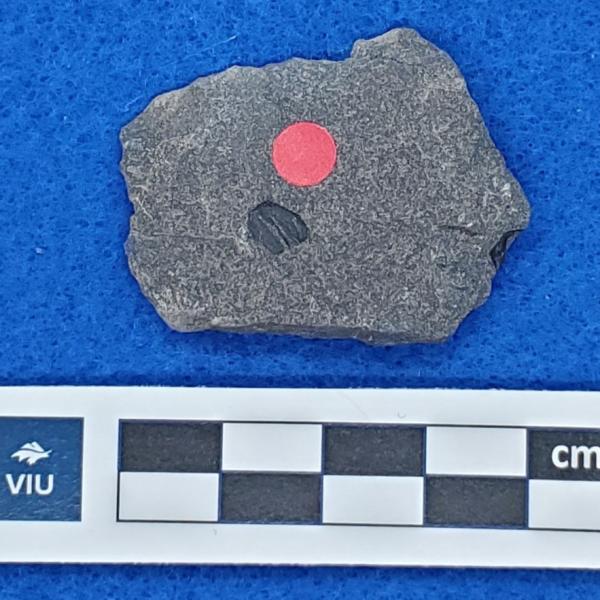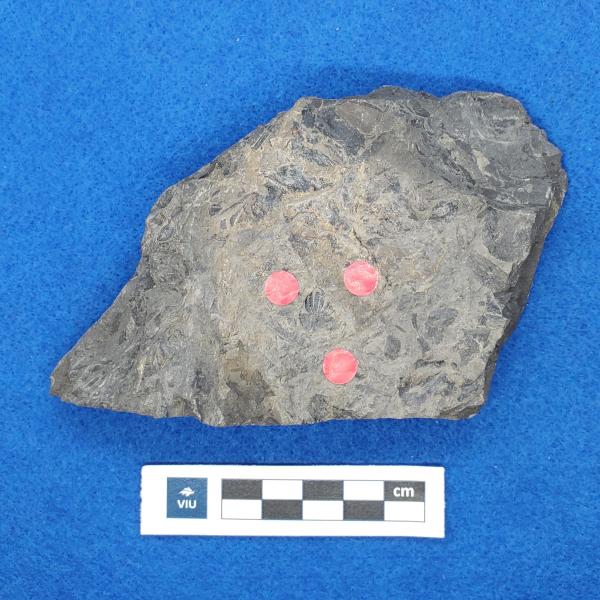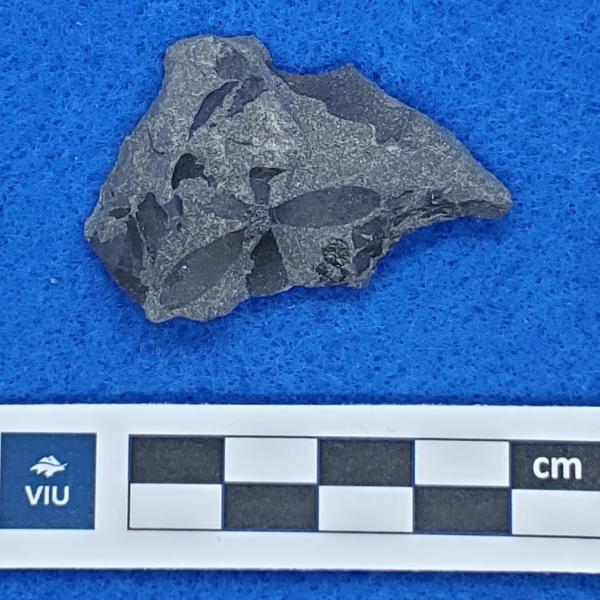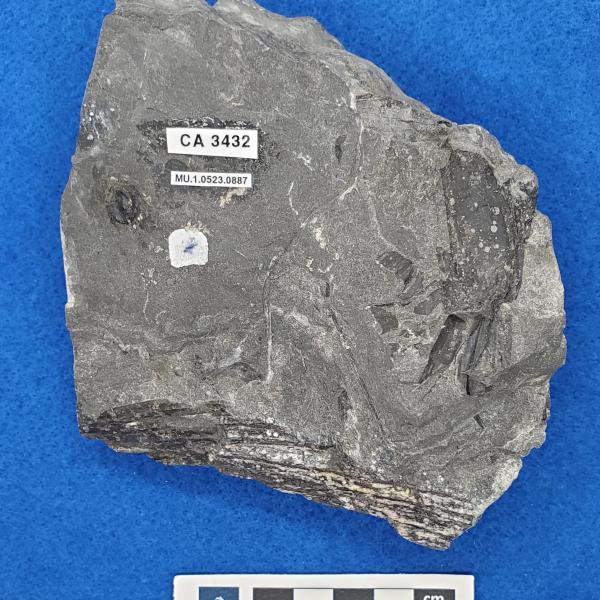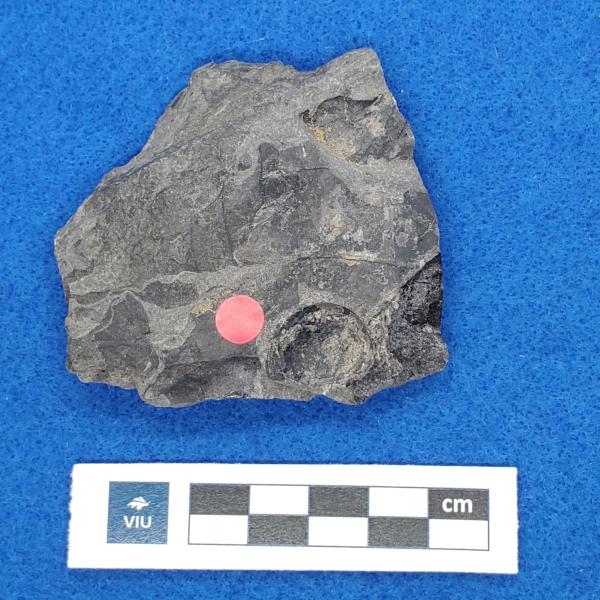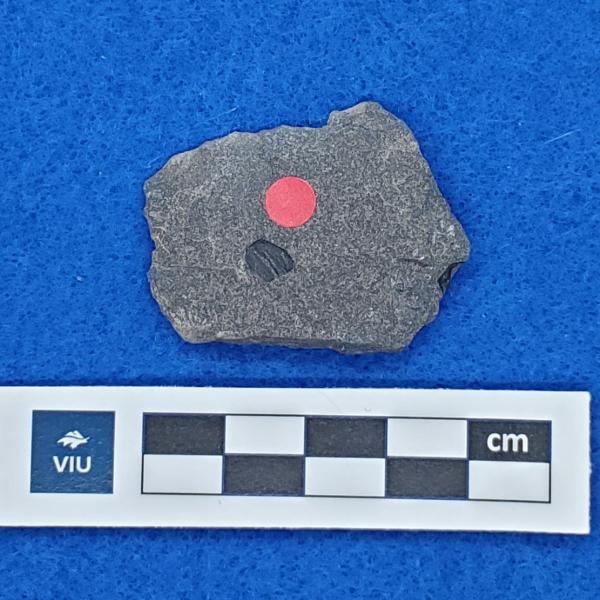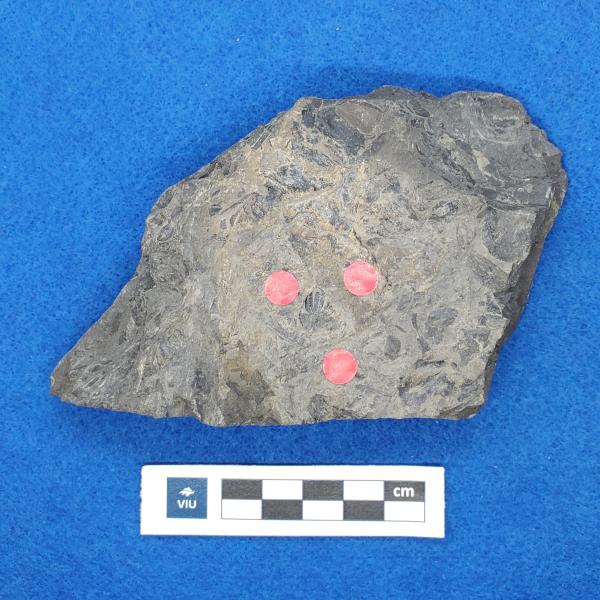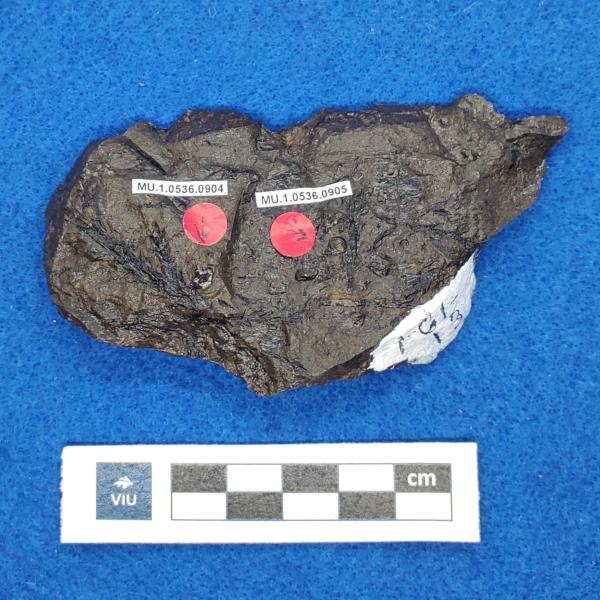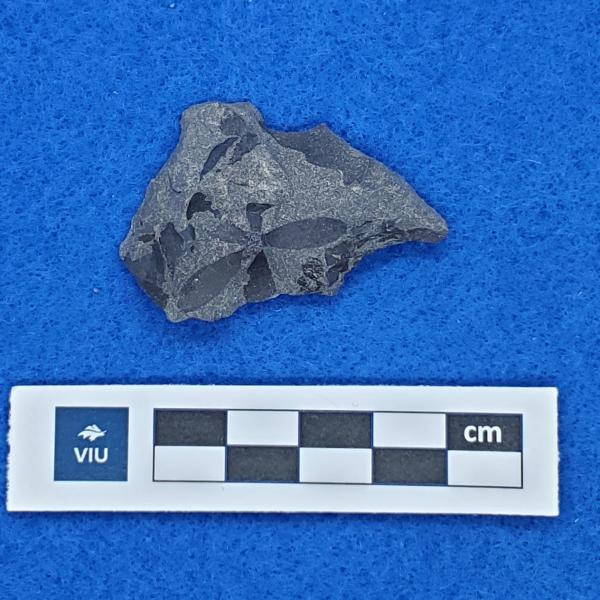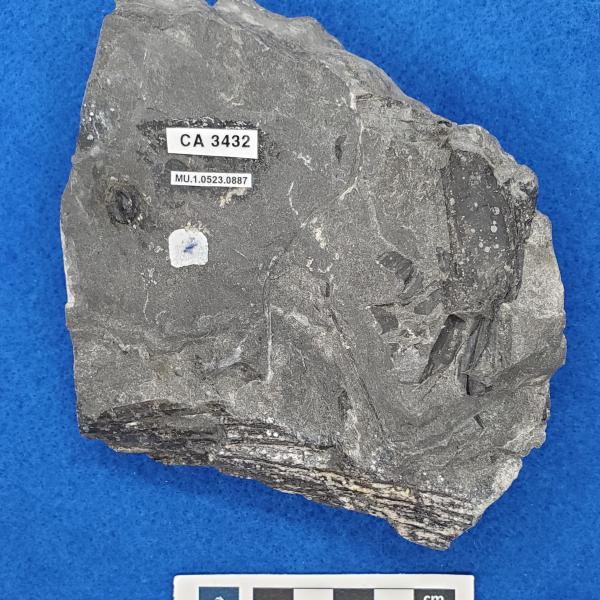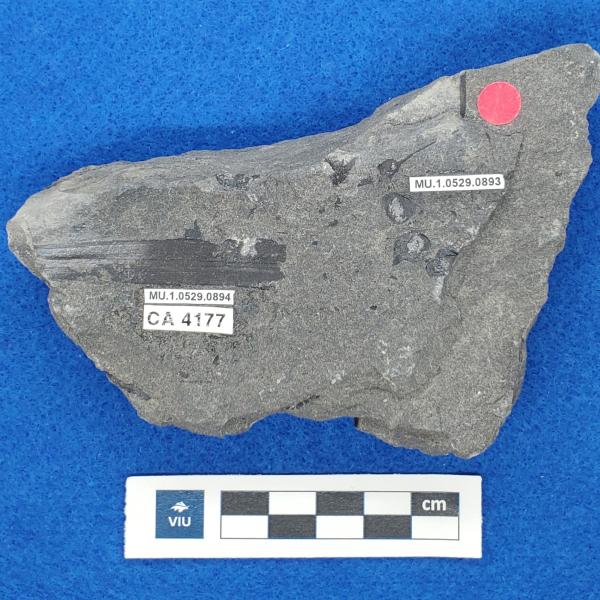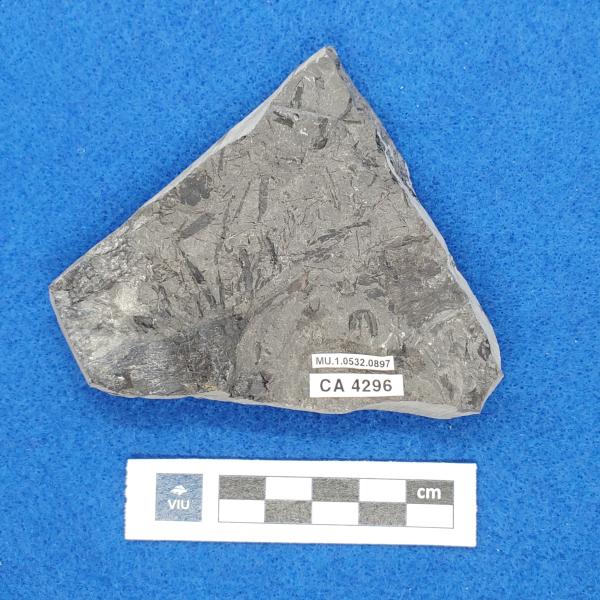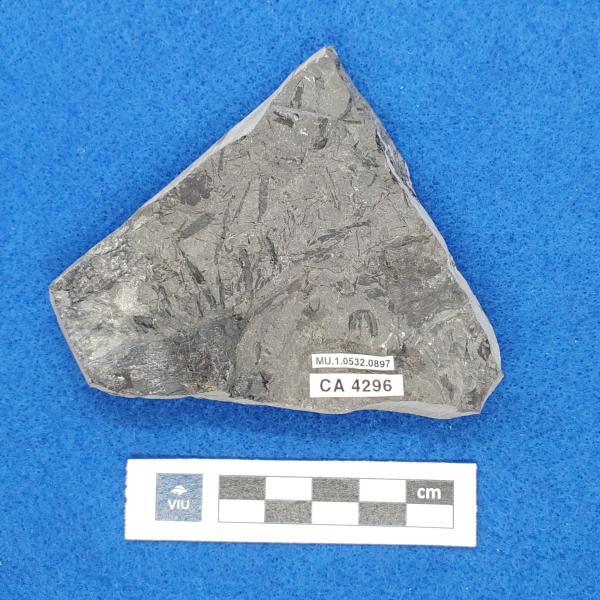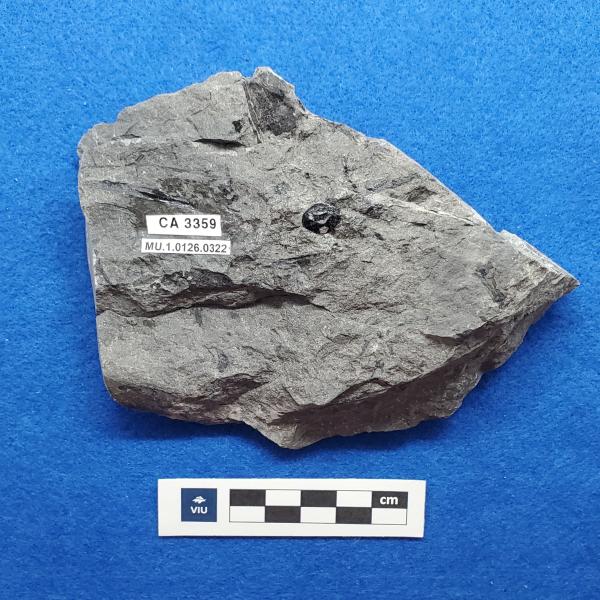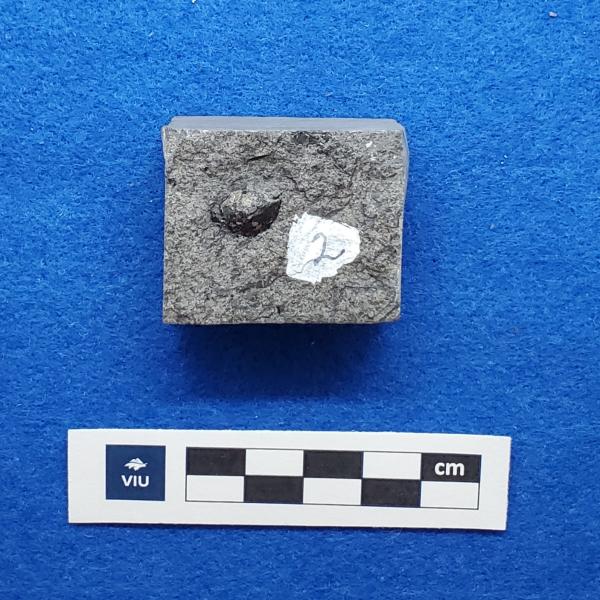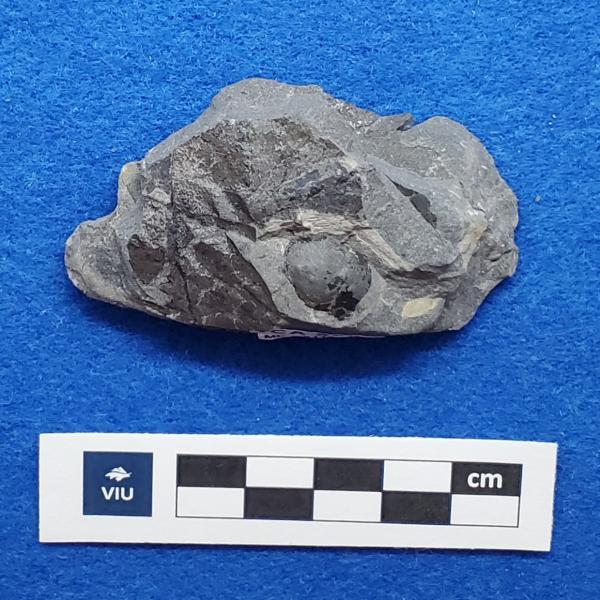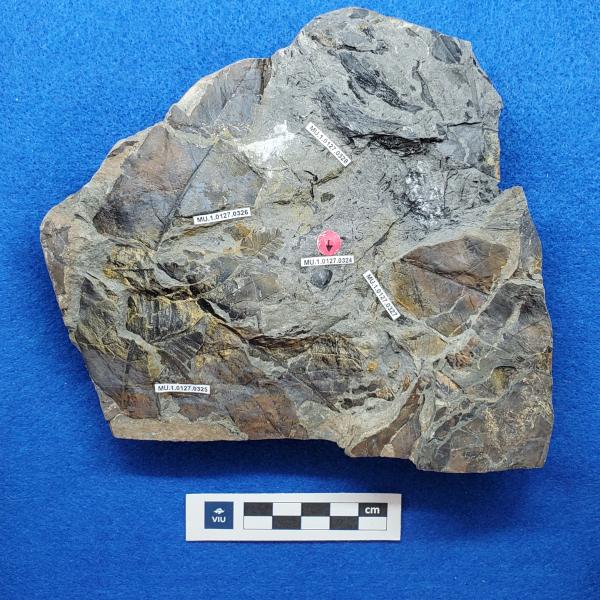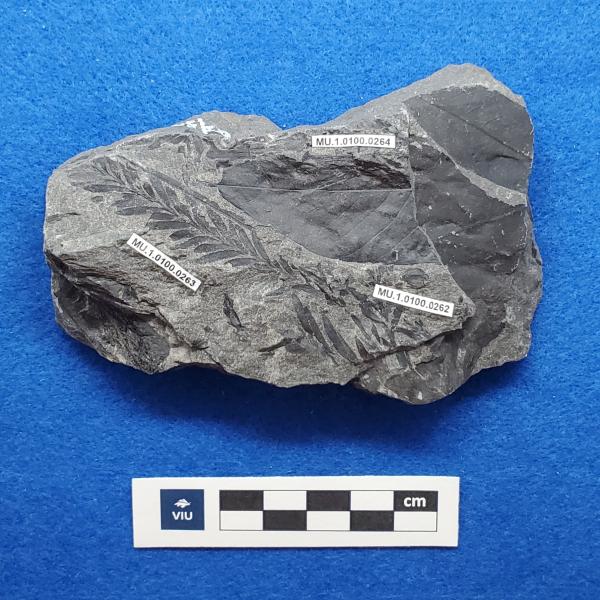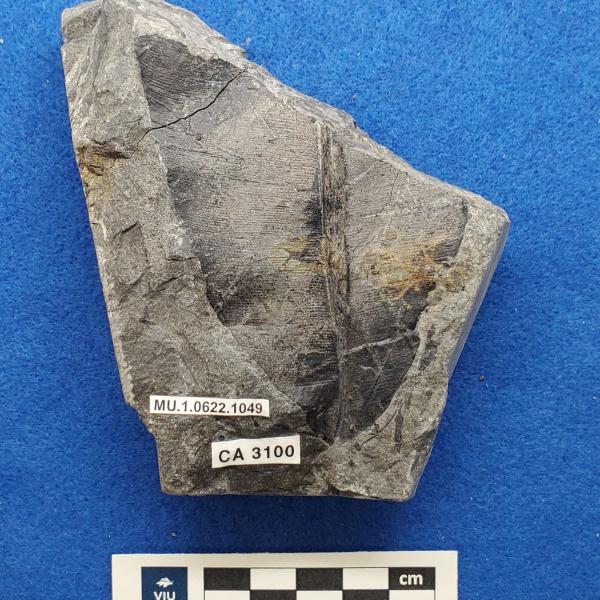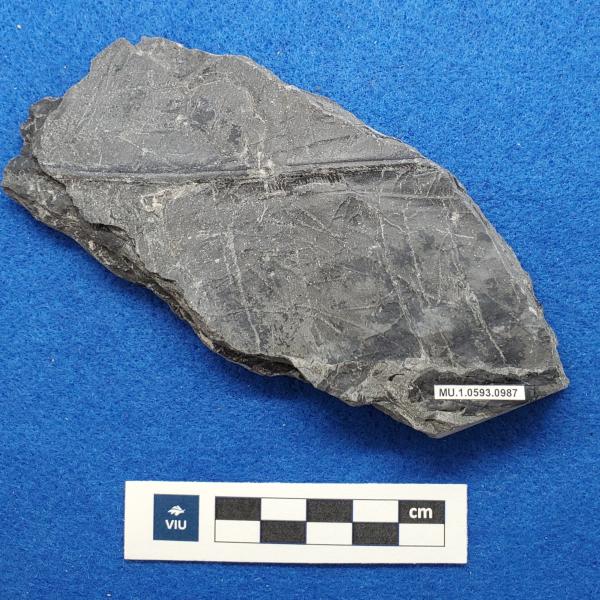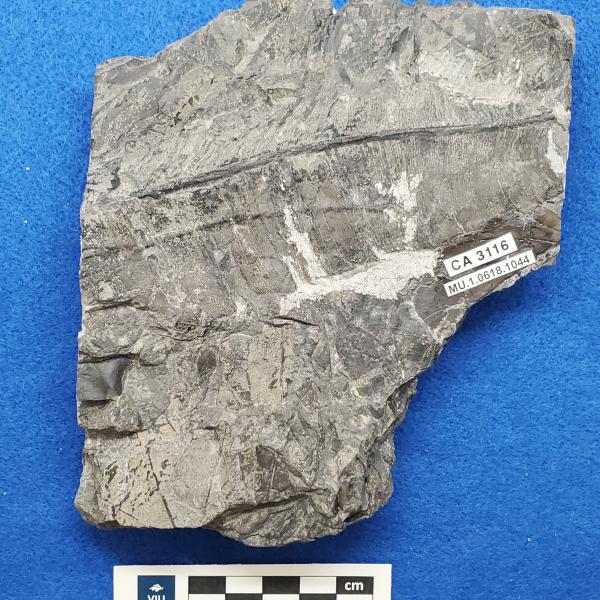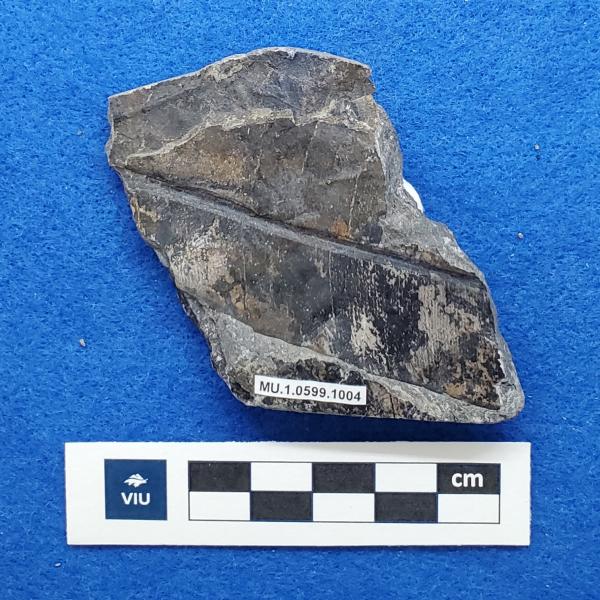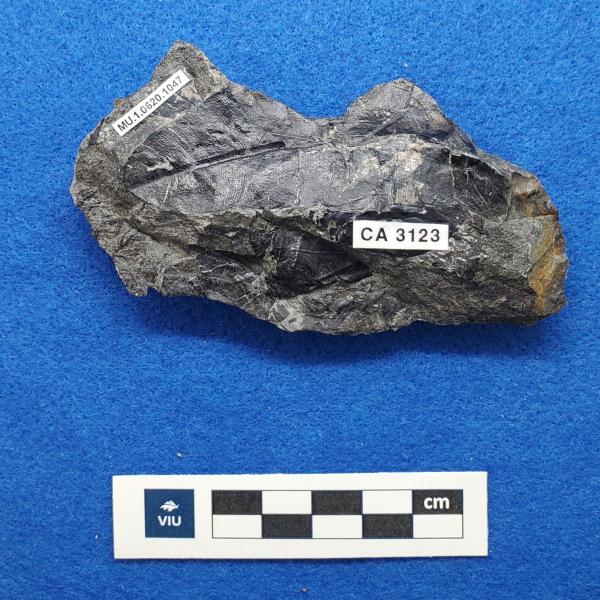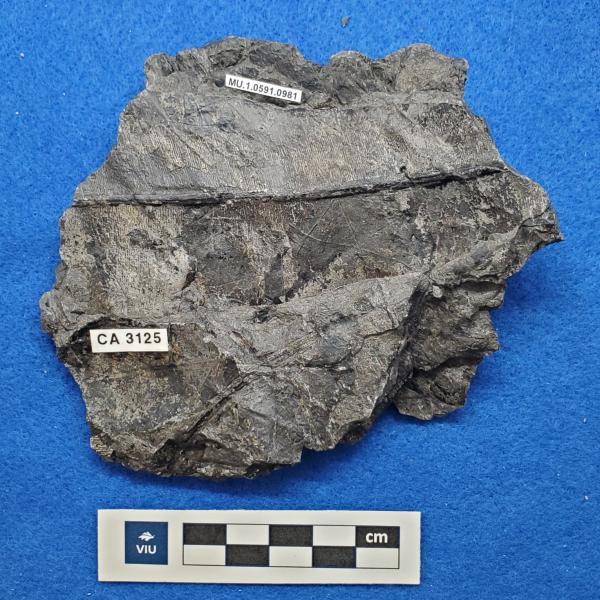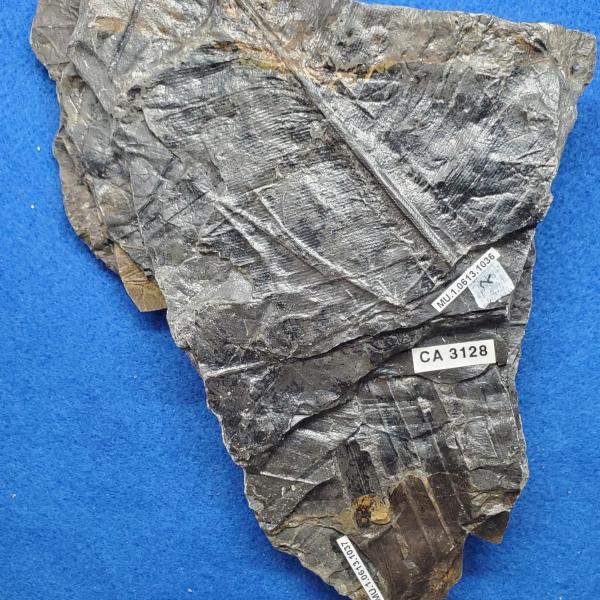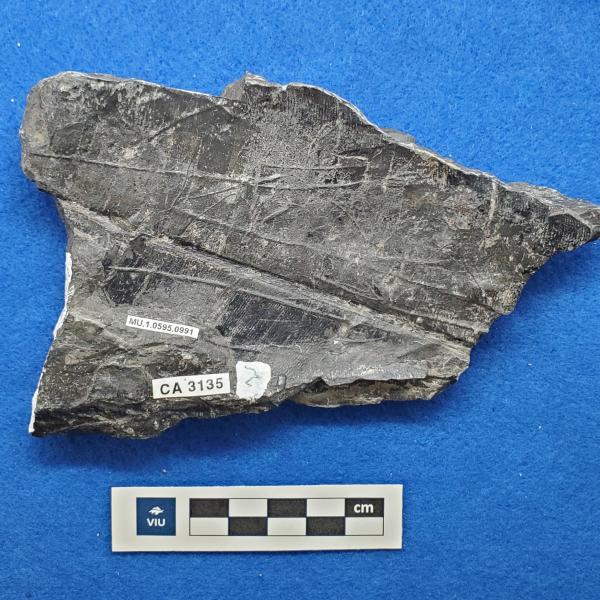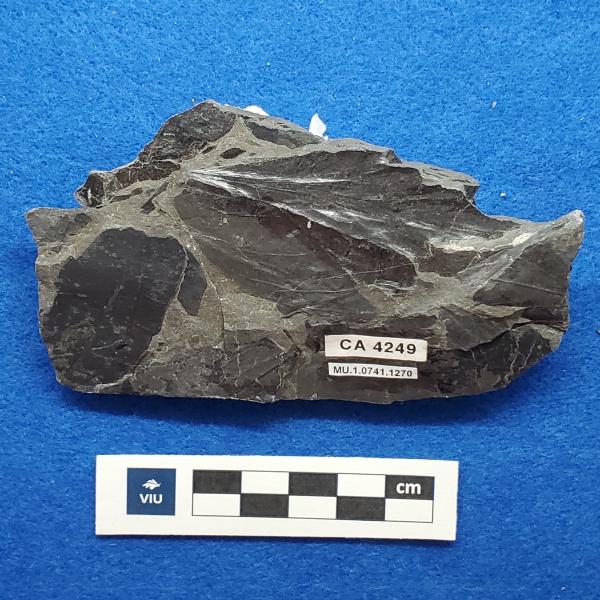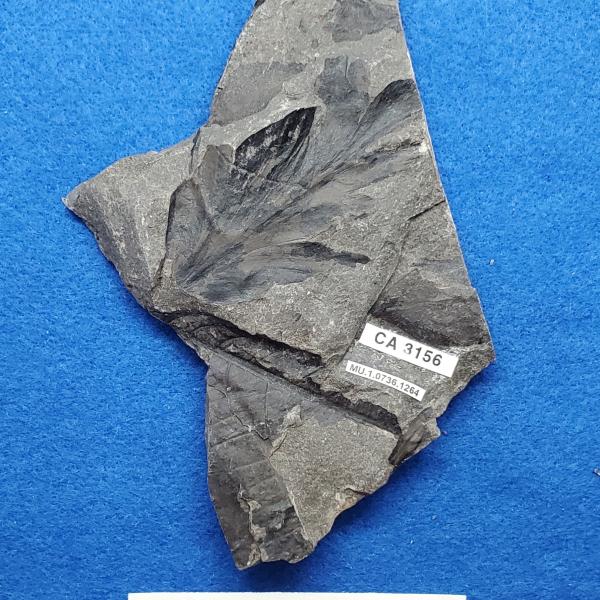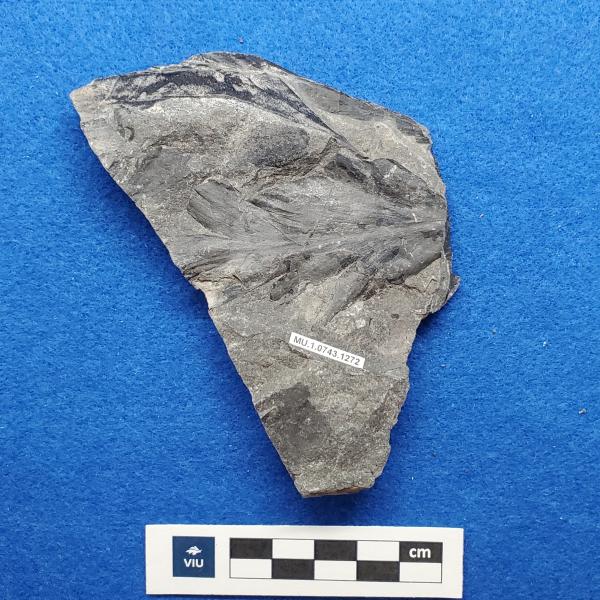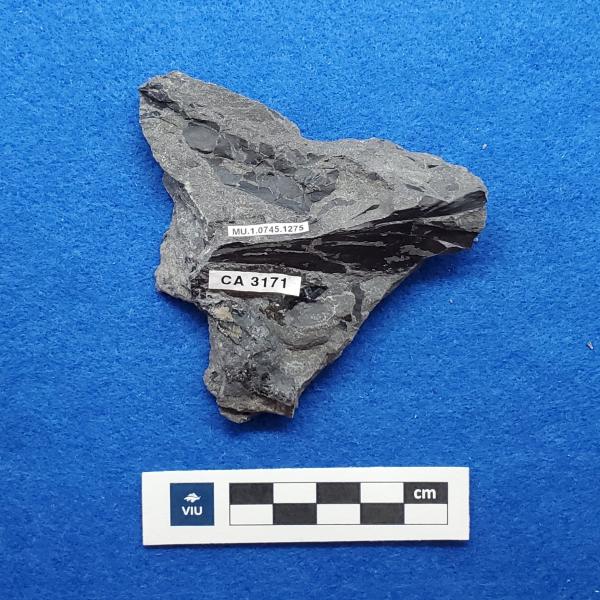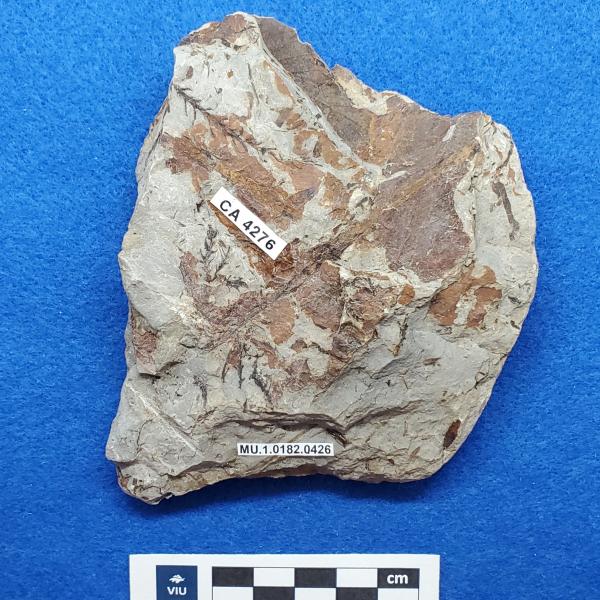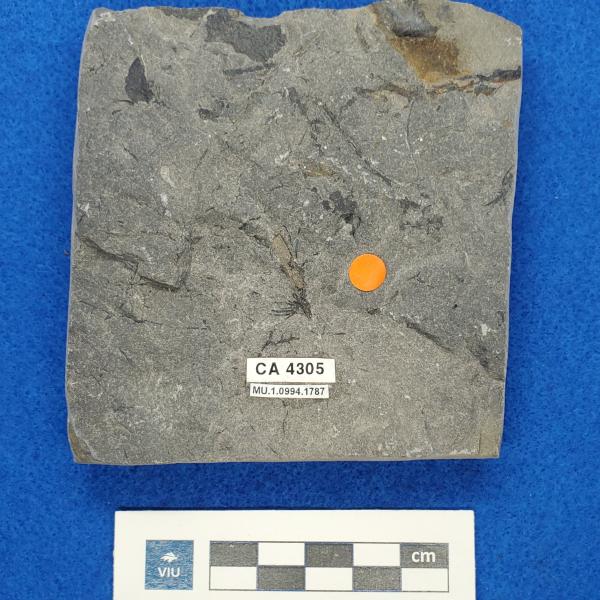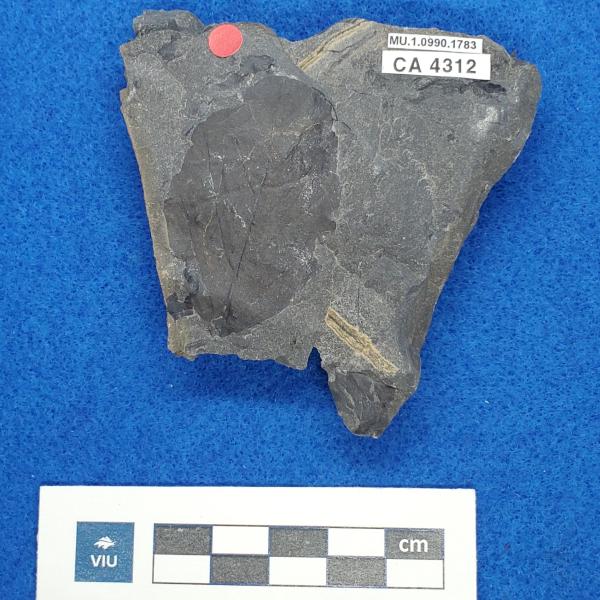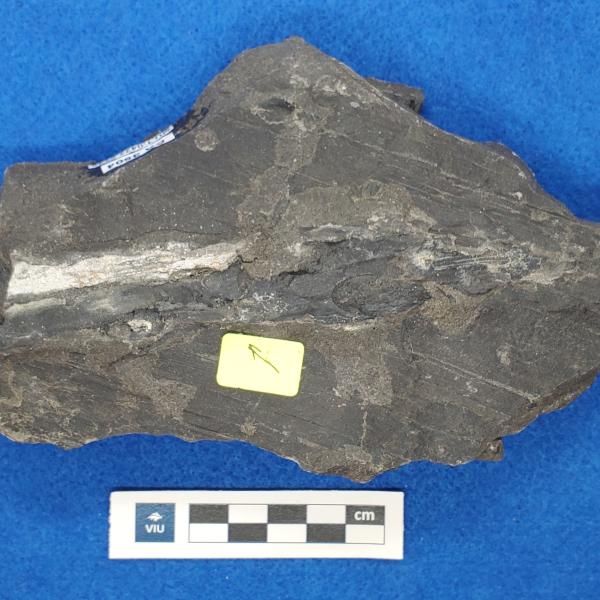The Cranberry Arms fossil locality is located just south of Nanaimo, British Columbia. This world-class fossil site hosts spectacular preservation of Cretaceous-aged flowering plants within the Protection Formation of Nanaimo group sedimentary rocks. The Earth Science Department of Vancouver Island University (VIU) is custodian to a large collection of fossils from the Cranberry Arms site that would be of interest to a wide range of researchers in the botanical and paleontological communities. Preservation of these fossils likely occurred in a swampy area as plant materials and sediments accumulated, then were buried and transformed into fossil materials. These fossils contain evidence that climatic conditions were very different 80 million years ago compared to today (Pearson and Hebda, 2006). Fossils at the Cranberry Arms site were exposed during construction of the Duke Point Highway in 1996, and at that time collectors from various institutions visited the site. Fossil materials from the Cranberry Arms have been part of the VIU Earth Science Department collection since then. Additionally, a significant collection of Cranberry Arms fossils was donated by the Victoria Palaeontology Society to Vancouver Island University (then Malaspina University-College) in 2004.
Phoenicites imperialis
Phoenicites imperialis, the imperial palm, is an extinct feather leaf palm that is preserved as spectacular giant leaves over a meter in length as displayed near the Earth Sciences building on the VIU Nanaimo campus. It was first described in 1883 under a different name by the Canadian geologist and palaeontologist John William Dawson and later renamed Phoenicites imperialis (Greenwood et al. 2022). Palms are typically tropical plants, but some species will grow in temperate climates and the Chinese windmill palm Trachycarpus fortunei, one of the fan palm group, is a common sight on Vancouver Island and on the foreshore of English Bay in Vancouver. Feather palms, however, are exclusively tropical and Phoenicites imperialis is a key indicator that the Cranberry Arms flora grew under a tropical climate.
Ferns
Dicot leaves
Non-palm Monocots
Araucaria
The genus Araucaria refers to evergreen coniferous trees with branches covered in whorls of leathery or needle-like leaves. The distinctive monkey-puzzle tree belongs to this same genus. A fossil seed cone recovered from a carbonate concretion in Late Cretaceous Nanaimo Group sedimentary rock most closely resembles those of Araucaria Section Eutacta (Stockey and Rothwell 2020).
Metasequoia
Metasequoia is a genus of deciduous redwood conifers. Currently found only in an enclosed valley in south central China, the only extant species Metasequoia glyptostroboides is on the Red List of Threatened Species (Fu et al. 2023).
Flowers, Fruits and Seeds
Nilssonia
Protophyllocladus
Glyptostrobus
The genus Glyptostrobus belongs to the conifer family Cupressaceae. From the Early Cretaceous, the genus could be found throughout much of the northern hemisphere until the Pleistocene glaciations reduced its coverage (LePage 2007). Extant species are now found primarily in southeastern China (Averyanov et al. 2009).
Enigmata
Herbivory
References
Averyanov, L. V., Phan, K. L., Nguyen, T. H., Nguyen, S. K., Nguyen, T. V., & Pham, T. D. (2009). Preliminary observation of native Glyptostrobus pensilis (Taxodiaceae) stands in Vietnam. Taiwania, 54(3), 191-212.
Fu, F., Song, C., Wen, C., Yang, L., Guo, Y., Yang, X., ... & Cao, F. (2023). The Metasequoia genome and evolutionary relationships among redwoods. Plant Communications, 4(6).
Greenwood, D. R., Conran, J. G., & West, C. K. (2022). Palm fronds from western Canada are the northernmost palms from the Late Cretaceous of North America and may include the oldest Arecaceae. Review of Palaeobotany and Palynology, 301, 104641.
LePage, B. A. (2007). The taxonomy and biogeographic history of Glyptostrobus Endlicher (Cupressaceae). Bulletin of the Peabody Museum of Natural History, 48(2), 359-426.
Pearson, J., Hebda, R. J., Haggart, J. W., Enkin, R. J., & Monger, J. W. H. (2006). Paleoclimate of the Late Cretaceous Cranberry Arms flora of Vancouver Island: evidence for latitudinal displacement (Vol. 46, pp. 133-145). St. John’s, NL, Canada: Geological Association of Canada.
Stockey, R. A., & Rothwell, G. W. (2020). Diversification of crown group Araucaria: the role of Araucaria famii sp. nov. in the Late Cretaceous (Campanian) radiation of Araucariaceae in the Northern Hemisphere. American Journal of Botany, 107(7), 1072-1093.

